RS Aggarwal Class-7 Fundamental Geometrical Concept ICSE Goyal Brothers Prakashan Chapter-16 Solutions. We provide step by step Solutions of Exercise / lesson-16 Fundamental Geometrical Concept for ICSE Class-7 RS Aggarwal Mathematics.
Our Solutions contain all type Questions with Exe-16 A, MCQs Exe-16 B with Mental Maths to develop skill and confidence. Visit official Website CISCE for detail information about ICSE Board Class-7 Mathematics.
| Board | ICSE |
| Publications | Goyal brothers Prakshan |
| Subject | Maths |
| Class | 7th |
| Chapter-16 | Fundamental Geometrical |
| Writer | RS Aggrawal |
| Book Name | Foundation |
| Topics | Solution of Exe-16 A, MCQs Exe-16 B with Mental Maths |
| Academic Session | 2021-2022 |
RS Aggarwal Class-7 Fundamental Geometrical Concept ICSE Goyal Brothers Prakashan Chapter-16 Solutions
-: Select Topic :-
The fundamental geometrical concepts depend on three basic concepts — point, line and plane. The terms cannot be precisely defined. However, the meanings of these terms are explained through examples. It is the mark of position and has an exact location
Point:
It is the mark of position and has an exact location.
- It has no length, breadth or thickness.
- It is denoted by a dot made by the tip of a sharp pencil.
- It is denoted by capital letter.
- In the given figure P, Q, R represents different points
Line:
- It is a straight path which can be extended indefinitely in both the directions.
- It is shown by two arrowheads in opposite directions.
- It does not have any fixed length.
- It has no endpoints.
- It is denoted as AB ↔ or BA↔ and is read as line AB or line in the BA.
- It can never be measured.
- Infinite number of points lie on the line.
- Sometimes it is also denoted by small letters of the English alphabet.
Ray:
- It is a straight path which can be extended indefinitely in one direction only and the other end is fixed.
- It has no fixed length.
- It has one endpoint called the initial point.
- It cannot be measured.
- A number of rays can be drawn from an initial point O.
- Ray OA and ray OB are different because they are extended in different directions.
- Infinite points lie on the ray.
Line Segment:
- It is a straight path which has a definite length.
- It has two endpoints.
- It is a part of the line.
- It is denoted as AB or BA.
- It is read as line segment AB or line segment BA.
- The distance between A and B is called the length of AB
- Infinite number of points lies on a line segment.
- Two line segments are said to be equal if they have the same length.
Plane:
A smooth, flat surface gives us an idea of a plane. The surface of the table, wall, blackboard, etc., is smooth and flat. It extends endlessly in all the directions. It has no length, breadth or thickness. Certain figures like square, rectangle, triangle, and circle on the plane. Hence, these figures are also called plane figures.
Incidence Properties of Lines in a Plane:
- An infinite number of many lines can be drawn to pass through a given point in a plane.
- Through a given point in a plane, infinitely many lines can be drawn to pass through.
- Two distinct points in a plane determine a unique line.
- One and only one line can be drawn to pass through two given points, i.e., two distinct points in a plane. This line lies wholly in the plane.
- Infinite number of points lie on the line in a plane.
- Two lines in a plane either intersect at a point or they are parallel to each other.
Collinear Points:
Two or more points which lie on the same line in a plane are called collinear points.
- The line is called the line of colinearity.
- Two points are always collinear.
Concurrent Lines:
Three or more lines which pass through the same point are called concurrent lines and this common point is called the point of concurrence
Two lines in a Plane:
- Intersecting Lines: Two lines in a plane which cut each other at common point are called intersecting lines and the point is called the point of intersection
- Parallel Lines: Two lines in a plane which do not intersect at any point, i.e., they do not have any point in common are called parallel lines. The distance between the two parallel lines remains the same throughout
Exe-16 A,
RS Aggarwal Class-7 Fundamental Geometrical Concept ICSE Goyal Brothers Prakashan
Page 172
Question 1:
Answer the following questions :
(i) How many end points does a line segment AB have ?
(ii) How many end points does a ray AB have ?
(iii) How many end points does a line AB have ?
Answer :
(i) Line segment AB have two end points.
(ii) a line AB
(iii) Line AB has no end point.
Question 2:
Which of the following has a definite length ?
(i) a ray AB –>
(ii) a line AB <–>
(iii) a line segment AB
Answer :
(i) Ray AB –> has no definite length,
(ii) Line AB <- ->has no definite length.
(iii) Line segment AB has definite length.
Question 3:
How many lines can be drawn to pass through two given fixed points P and Q ?
Answer :
![]()
Only one line can be drawn to pass through two given fixed points P and Q.
Question 4:
How many lines can be drawn to pass through a given point ?
Answer :

Infinitely many lines can be drawn to pass through a given point.
Question 5:
A fixed point P is given. How many rays can be drawn with P as initial point ?
Answer :
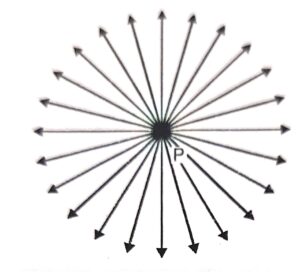
Infinitely many rays can be drawn with Pas initial point.
Question 6:
Draw a line segment of length 53 cm.
Answer :
Draw a line segment of length 53 cm.

Question 7:
Mark six points P Q, R, X, Y, Z such that P, Q, R are collinear and X, Y,Z are not collinear.
Answer :
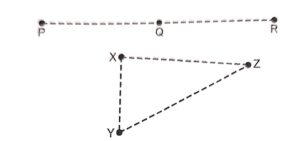
Question 8:
How many lines can be drawn through three :
(i) collinear points
(ii) non-collinear points
Answer :
(i) Through three collinear point, only one line is drawn :

(ii) Through three non-collinear points, three lines can he drawn :
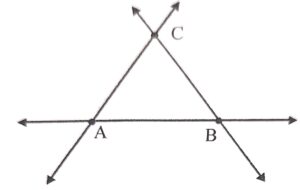
Question 9:
What is the maximum and minimum number of points of intersection of three lines drawn in a plane ?
Answer :
When three lines intersects, then point of intersection can be three in maximum and number. point in minimum .
MCQs Exe-16 B,
RS Aggarwal Class-7 Fundamental Geometrical Concept ICSE Goyal Brothers Prakashan
Page 172
Choose the correct option in each of the following :
Question 1: Number of lines that can pass through any given point is
(a) 0
(b) 1
(c) 2
(d) infinite
Answer : From a given point, infinite number of lines can pass.
Question 2: Two planes intersect in
(a) a point
(b) a line
(c) a pair of lines
(d) a pair of parallel lines
Answer : Two planes intersect in a line.
Question 3: Two lines which never meet are called
(a) concurrent lines
(b) parallel lines
(C) intersecting lines
(d) rays
Answer : Two lines which never meet are called parallel lines.
Question 4: Number of lines that can be drawn passing through two given points in a plane is
(a) 0
(b) 1
(c) 2
(d) infinite
Answer : Number of lines that can be drawn passing through two given points in a plane is 1.
Question 5: In how many point do two intersecting lines meet ?
(a) 0
(b) 1
(c) 2
(d) infinite
Answer : Meet at one (1) Point
Mental Maths
RS Aggarwal Class-7 Fundamental Geometrical Concept ICSE Goyal Brothers Prakashan
Page 172
Question 1:
Fill in the blanks:
(i) A ………… has no dimensions.
(ii) A line segment extended endlessly in one direction is called a …………..
(iii) The points lying on the same line are said to be ………….
(iv) The point at which three or more lines lying in a plane, intersect is called ………….
(v) A smooth flat surface which extends endlessly in all the directions is called a ………….
Answer :
(i) A Point has no dimensions.
(ii) A line segment extended endlessly in one direction is called a ray.
(iii) The points lying on the same line are said to be collinear.
(iv) The point at which three or more lines lying in a plane, intersect is called point of concurrence.
(v) A smooth flat surface which extends endlessly in all the directions is called a Plane.
Question 2:
Write true (T) or false (F):
(i) Two points are always collinear
(ii) A line has no end points.
(iii) A ray extends endlessly.
(iv) Two lines in a plane always intersect.
(v) Only one line can be drawn passing through two given points in a plane.
Answer :
(i) Two points are always collinear. True
(ii) A line has no end points. True
(iii) A ray extends endlessly. True
(iv) Two lines in a plane always intersect. False
(v) Only one line can be drawn passing through two given points in a plane. True
–: End of RS Aggarwal Class-7 Fundamental Geometrical Concept Solutions :–
Return to- RS Aggarwal Solutions for ICSE Class-7 Goyal Brothers Prakashan
Thanks
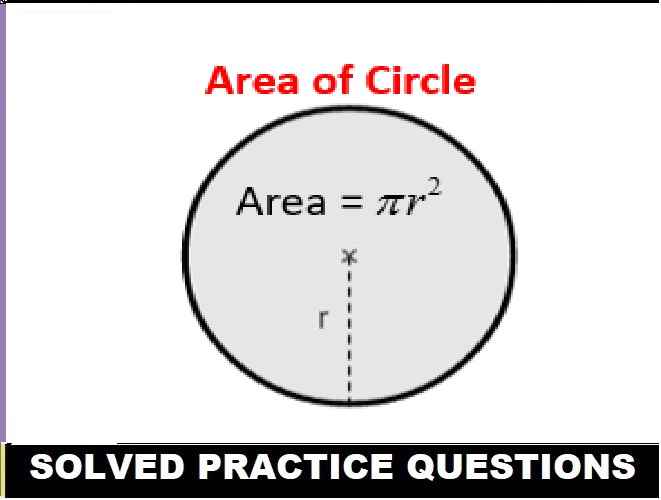
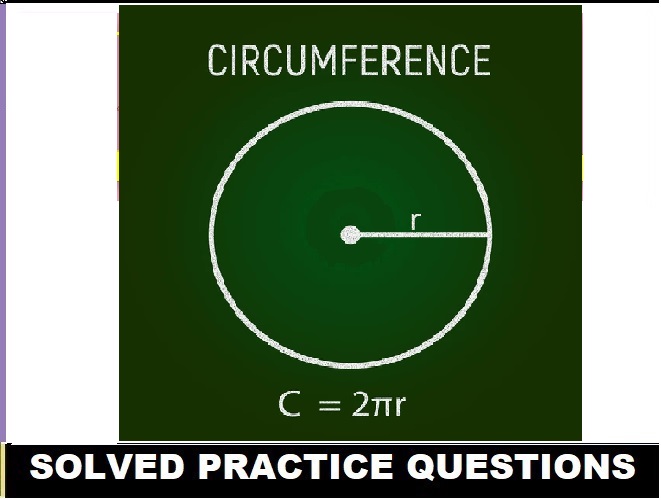
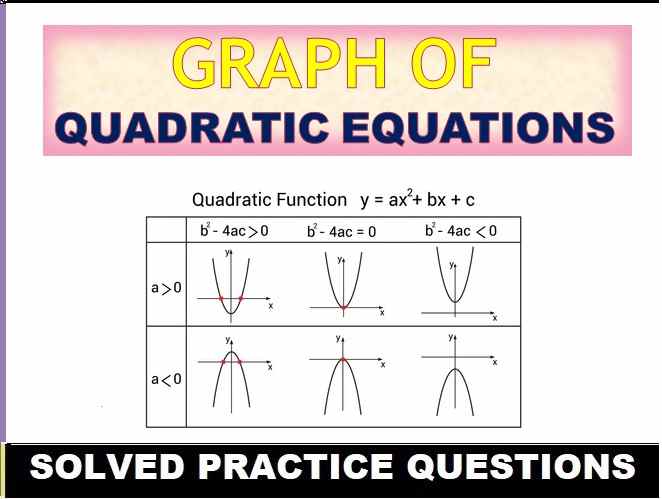
nice we are satisfied
now full chapter PDF showing/ working
please visit again for analysis